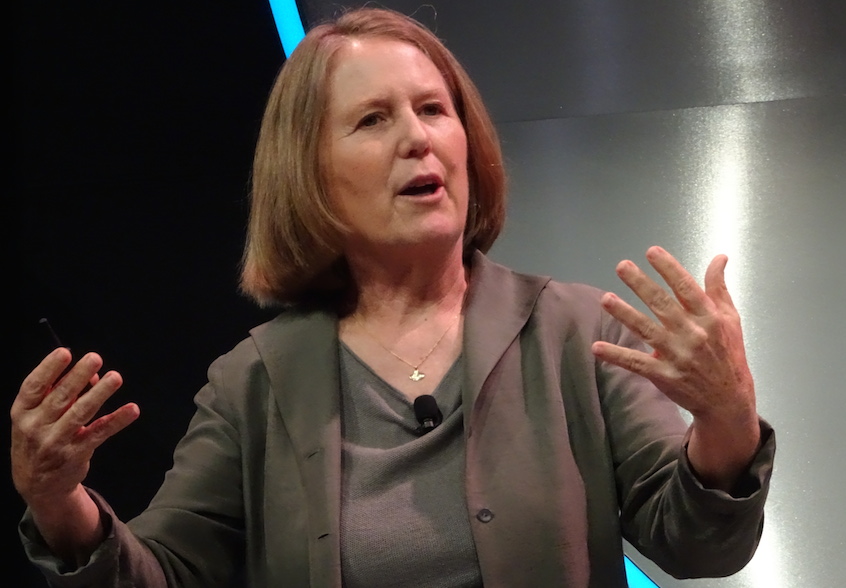 NEWS
NEWS
 NEWS
NEWS
 NEWS
NEWS
Google Inc. is unifying all its enterprise and cloud services under a new moniker, Google Cloud, in a move that it hopes will signal to potential customers that it’s all-in on cloud computing for large enterprises.
Google Cloud now will include not only the current Google Cloud Platform public cloud infrastructure, but also Google Apps for Work, Chromebooks, Android devices and application programming interfaces (APIs) for machine learning and other enterprise services. Taken together, the cloud services now have 1 billion users, the eighth service of Alphabet Inc.’s main subsidiary to reach that level of users.
There’s also another new name for the former Apps for Work collection of services, including Gmail, Google Docs, Sheets, Slides, Forms, Google+, Calendar and Hangouts: G Suite. It includes some new wrinkles such as Quick Access for Drive, which learns a person’s use patterns to serve up files they’re likely to search for next.
“The name change from Google For Work to Google Cloud better represents what they believe they are best at,” said Patrick Moorhead, president and principal analyst at Moor Insights & Strategy.
Google made those announcements along with new cloud and customer support services today at a slick, invite-only event in San Francisco for customers and partners called Horizon. The company showed off demonstrations of various cloud and app capabilities such as a facial emotion analyzer and a spreadsheet populated in real time with government data sets.
The event was one of a number of coming-out parties for Google’s Cloud Platform this year. The search giant has one of the most advanced cloud computing systems on the planet to power its own services and apps, but only last year started selling those services in earnest to other companies.
The Google Cloud still trails far behind leaders such as Amazon Web Services and Microsoft Azure. At the event, Diane Greene (above), senior vice president for Google Cloud, conceded that the one question she got at visits to prospective customers until recently was: Is Google really serious about the enterprise?
“It drove us crazy because yeah, we are really serious about the enterprise,” Green said. She trotted out a raft of numbers to show how fast Google Cloud is growing, with 10 times growth in storage revenues, four times growth in compute services, 25 times growth in managed containers. However, she didn’t provide absolute numbers and the time frame for the growth wasn’t immediately clear.
“We’re moving fast,” she said, citing a list of new customers that included Home Depot, Snap Inc., Evernote and Airbus. “We’ve got a lot of momentum.”
Digging a little deeper, Urs Hölzle, senior vice president of technical infrastructure at Google, announced the BigQuery for Enterprise service on the Google Cloud. BigQuery, Google’s pioneering service for analyzing huge data sets, now becomes “a data warehouse in the cloud,” Holzle said.
The new service puts Google more squarely in competition with Amazon.com’s Inc. AWS Redshift cloud data warehouse. Making the point that Google can scale to the needs of large companies, Holzle showed a graph indicating that BigQuery is 29 times faster than Amazon Redshift for 32 concurrent users. He also claimed it was cheaper because users can pay for it only when then use it, not pay for an ongoing “instance.”
Holzle also emphasized a key Google area of expertise: machine learning, which has helped improve everything from search to speech and image recognition. Google has introduced a number of APIs to make it easier to create applications that require those advanced capabilities and access them via the Google Cloud.
Today it announced that the cloud machine learning service it previewed at conference earlier this year is now available in beta test mode. “If you’ve been thinking about machine learning, now’s the time to try it out,” he said to the customers in the audience.
Not least, Google also sought to underscore its commitment to the cloud by revealing the locations of eight new data center regions to be built next year. They will be in Mumbai, Singapore, Sydney, Northern Virginia, London, Finland and Frankfurt and Sao Paulo. Another will open in Japan next month.
Providing a large enough infrastructure to compete with Amazon and Microsoft in the base level of cloud computing, Infrastructure as a Service, also is key to convincing customers Google is dedicated to the cloud. Holzle, who noted that Google spent $9.9 billion on its cloud infrastructure last year — which he said was double AWS and Microsoft Azure spending combined — also promised Google will announce one new data center region a month next year. “We’re going to keep up that pace for quite a while,” he said.
Google also announced an alliance with Accenture to develop cloud-based solutions for customers in specific industries to develop better digital experiences for customers and manage their own operations better. And it said it has formed a Customer Reliability Engineering unit and announced a number of new customer support services.
Earlier this year, Google hired Tariq Shaukat, former chief commercial officer at Caesars Entertainment Corp., as president of customer engineering and operations for Google Cloud, a sign of a greater focus on supporting customers in their move to the cloud. Google has been criticized for not providing enough hand-holding in those efforts. Google also hired Alison Wagonfeld as vice president of marketing for Google’s enterprise businesses, a signal of its intention to market those services more aggressively.
Still, Google has a lot of catch-up to do. “Enterprises need a face, one throat to choke, not the nameless, faceless view customers typically get from the public cloud,” Moorhead said. “This isn’t in Google’s core DNA.”
Moorhead thinks Google’s stated direction is correct, “but I don’t expect them to get it right the first time. Competitively, Microsoft Azure gets this already.”
Photos by Robert Hof
THANK YOU